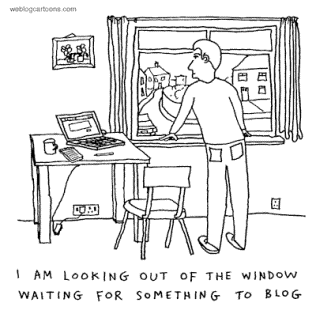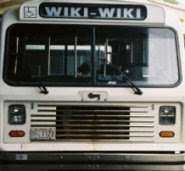
I was originally not going to take a fall session course. After finishing an intense six week summer course I was prepared to take a semester off and enjoy a little break from coursework. It was by chance that I saw this course on the schedule and decided to register in it because of my keen interest in educational technologies. I have genuinely enjoyed this course and have become more aware of Web 2.0 emerging tools that, in turn, have enhanced my personal and professional growth.
There was nothing intimidating about the content of this course for me. However, there were a few challenges in learning the ‘workings’ of a variety of 2.0 tools in the short timeframe we had because of new topics to tackle each week.
Reflecting back to my first blog posting (the introductory blog) I remember experiencing difficultly getting started. I asked myself how to best take that first leap of faith into the blogosphere and still protect my personal privacy through a public blog. I struggled with creating and maintaining personal privacy boundaries. I didn’t want these boundaries to overshadow the professional background I needed to establish in order to make connections with future blog readers and followers. My introductory blog begins “I’m not sure what to expect…” and ends with “I'm still not sure what to expect...Web 2.0 possibilities are enormous...Oh, the places we'll go!” From my introductory posting to this reflective one, readers can see ‘The places I’ve been…’
Some Challenges...
-Using the Flickr photostream
-First time video uploading
Week one was about investigating photo sharing sites such as Picasa and Flickr. I decided to focus on Flickr as I thought that site looked simple and one that I could easily introduce to staff and students as a web based tool. I saw potential to use Flickr as a source to run a slideshow highlighting my favourite children’s book covers on the sidebar of my blog – great! My book covers were uploaded and in a photostream posted to my blog – no problem. I continued to upload in Flickr, saving new photos in a different folder set, but during this while composing a photo blog posting I noticed that my new set of photos fused into my book cover photostream and my slideshow was out of control in my sidebar. It took several days to fix the problem, causing me to shutdown my slideshow gadget while repairing the situation. To this day I’m still not sure why the two sets combined together, but this is a problem I want to explore and resolve.
In week two we were asked to explore video sharing sites, which would ultimately lead to having to upload and post my first video. While the actual process was only a matter of copying the embedded URL information, it cause technical grief for a few days. For some reason I could not properly embed video into my posting. Frustration set in because I noticed that many of my classmates had posted videos on their blog, so I was my blog rejecting my attempts? After some Blogger help and navigating through my settings, I discovered that I had inadvertently turned off a vital editing command. Video problem solved!
This cartoon is reflective of my thought process (or lack thereof) during the first week of class discovering that I had to become regular blogger…for a couple months…what could I possibly have to say that was interesting? It was difficult taking the first blogging step…it will not be difficult continuing…

Blogging is not a spectator sport!
Some Highlights...
One outstanding experience that will resonate long after this course is over is all of the professional connections generated through my active participation in the blogosphere. These connections were developed by following bloggers, commenting on blogs and writing weekly blog postings. First and foremost, thank you to all of my classmates! Your wisdom and individual insights into Web 2.0 tools has kept me reading your blogs with great anticipation and learning from your experiences with sincere gratitude.
Andrea’s Adventure’s in Web 2.0 documents Andrea’s Web 2.0 journey as seen through the eyes of a very dedicated teacher-librarian who is committed in sharing her new found knowledge with students and staff.
Bruce’s Saudixpat’s Weblog was a voyage into ‘cyburbia’ by articulating his personal progress along the way coupled with his writings about executing current student technology projects during the duration of this course.
Carol’s Tea for [Web] 2.0 blog not only invites readers on her professional technology journey, but she also invites readers to discover her personal growth through the lense of family experiences using Web 2.0 tools.
Chris the Teacher has a blog writing style marked with great enthusiasm in all of his postings. I enjoyed his videos, diagrams, and pictures that were carefully researched to fit each topic.
Christina began her blog journey asking valid questions about blogs and how they relate to the classroom (some of the same questions I had in the beginning). It was nice to read how her excitement level around Web 2.0 tools built up over the semester on Exploring Web 2.0.
Jacquie’s Great Digital Divide is about one educator’s journey into becoming more comfortable with Web 2.0 tools and connecting her new knowledge with meaningful learning opportunities for all students.
Danielle’s postings on 2.0 teaching and learning in her Docendo Discimus 2.0 blog often reflects on how emerging tools can relate to students at the primary grade levels. I welcome her thoughts on weaving 2.0 tools into a primary setting.
Following Jan’s Incredible Blogosphere Journey has provided me with an overabundance of valuable professional links, articles and references. I appreciate the ‘incredible blogosphere’ resources harmoniously hyperlinked into all postings.
Jo-Anne’s blog EDES 501 Web 2.0 Learning Log demonstrates insightful reflections that exemplify her commitment to professional development. I enjoy the thoughtfulness of her blog postings and wealth of resource sharing.
Sheila’s Spinning a Web about 2.0 highlights her blog evolution from initial trepidation to one of excited pleasure in sharing her 2.0 learning with staff members.
Where do I go from here? I wrote Web 2.0 tools into my professional growth plans submitted to my principal in September. I had every intention at the beginning of this course to access my new learning and us my participation as a springboard to launch 2.0 into my instruction for students, and as a leader to support educators on staff ready to embrace new technologies.
I plan to incorporate Web 2.0 tools into a couple projects within the primary and elementary grade levels. I have accomplished this at the grade three level by converting a language arts project created in Word and converted into a Wordle document (printed in colour and currently being displayed in the primary hallway).
A special thank you to University of Alberta course instructor Joanne de Groot. I have enjoyed reading your insightful comments and look forward to future blogosphere connections!!
"By learning you will teach, by teaching you will learn." ~Latin Proverb
I’m inspired to share more.
I’m motivated to learn more.
Oh, the places I'll go!

























